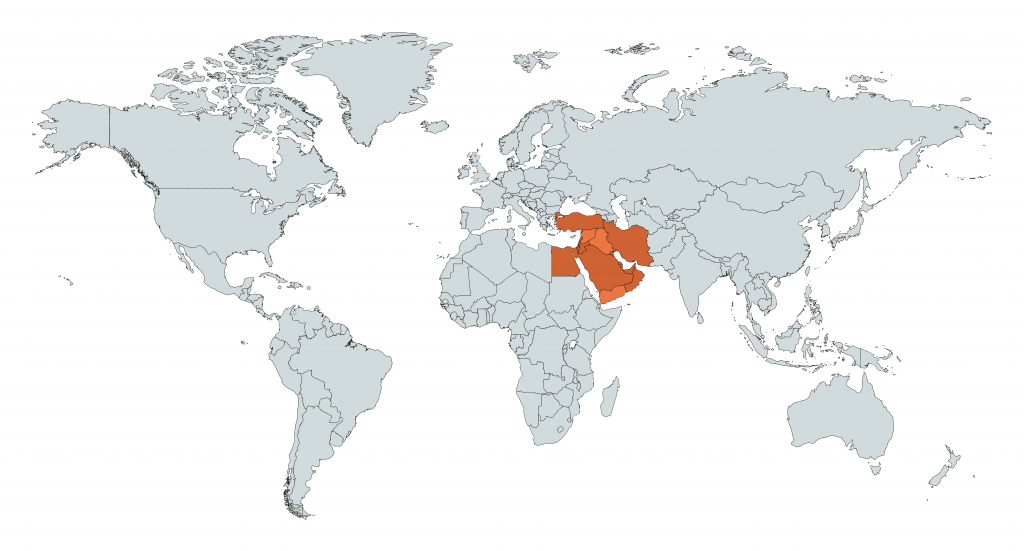The United Arab Emirates (UAE) is a vibrant country located on the eastern edge of the Arabian Peninsula, characterized by its rich cultural heritage, modern architectural marvels, and significant economic influence. Yet, amidst its growing global presence, a fundamental question often arises: What continent is the UAE in? This article delves into the UAE’s geographical identity, exploring its significance within Asia, its diverse landscapes, and its cultural richness.
The UAE’s Geographical Context
The UAE is firmly situated in Asia, specifically in the Middle East region. Bordered by Saudi Arabia to the south and west, and Oman to the southeast, the UAE has coastlines along both the Persian Gulf and the Gulf of Oman. This strategic location not only places the UAE in a crucial position for trade but also situates it as a cultural crossroads between the East and West.
The country is composed of seven emirates: Abu Dhabi, Dubai, Sharjah, Ajman, Umm Al-Quwain, Fujairah, and Ras Al Khaimah. Each emirate possesses unique characteristics and governance structures. For instance, Abu Dhabi is the largest emirate, accounting for about 87% of the UAE’s land area, while Dubai is renowned as the economic hub, attracting visitors from all over the world.

A Closer Look at the UAE’s Geography
The landscape of the UAE is primarily characterized by vast desert regions, including the Rub’ al Khali (also known as the Empty Quarter) to the south, which is the largest contiguous sand desert in the world. It features stunning sand dunes that can reach heights of over 250 meters. In contrast, the northeastern part of the country is dominated by the rugged Hajar Mountains, providing a cooler climate and diverse flora and fauna, making this region ideal for adventure tourism.
The UAE’s coastline stretches approximately 1,318 kilometers along the Persian Gulf, dotted with numerous man-made islands, such as the famous Palm Jumeirah and The World Islands, showcasing the country’s innovative approach to urban development. The blend of natural and artificial landscapes not only enhances its scenic beauty but also contributes to its reputation as a global tourist destination.

Cultural and Economic Significance
The UAE’s location in Asia enhances its role as a global trading hub. Cities like Dubai and Abu Dhabi attract millions of tourists and business travelers each year, significantly contributing to the UAE’s economy, which was valued at approximately $421 billion in 2023. The country boasts a modern infrastructure with cutting-edge facilities in various sectors, including finance, tourism, and technology.
Moreover, the UAE’s cultural landscape reflects its Asian roots, with a mix of traditional Arab culture and modern influences. The nation is home to a diverse population, with expatriates from around the globe, contributing to its multicultural atmosphere. From the historic sites in Abu Dhabi, such as the Sheikh Zayed Grand Mosque, to the ultramodern architecture of Dubai, including the Burj Khalifa, the UAE stands as a melting pot of cultures that resonates with expatriates and locals alike .
The UAE in the Context of Asia
Understanding the UAE’s place within Asia is crucial to appreciating its geopolitical significance. As a member of the Gulf Cooperation Council (GCC), the UAE collaborates with neighboring countries like Saudi Arabia, Kuwait, Bahrain, Oman, and Qatar to enhance economic stability and security in the region . This collaboration underscores the UAE’s strategic importance in Asia, especially concerning oil production and trade routes.
Furthermore, the UAE actively participates in international organizations, including the United Nations, Arab League, and Organisation of Islamic Cooperation (OIC), further emphasizing its role on the Asian continent. These affiliations enable the UAE to foster diplomatic relations, engage in peacekeeping efforts, and promote economic development throughout the region .
Tourism: Bridging Cultures
Tourism is a vital aspect of the UAE’s economy and serves as a bridge between various cultures. The country’s emphasis on hospitality, luxury, and unique experiences attracts millions of tourists annually. Major events like the Dubai Shopping Festival, Abu Dhabi Film Festival, and the Sharjah International Book Fair showcase the UAE’s cultural diversity and openness .
The UAE’s strategic location makes it a perfect gateway for travelers looking to explore both Asia and beyond. With direct flights connecting major cities across the globe, the UAE serves as a hub for tourism and business alike . This connectivity fosters a sense of global community and highlights the UAE’s significance as a continental player.
Conclusion: Asia’s Jewel
In summary, the UAE is undeniably located in Asia, offering a unique blend of tradition and modernity. Its strategic position in the Middle East not only enhances its economic significance but also enriches its cultural tapestry, making it a fascinating destination for travelers and business professionals alike. Understanding its continental identity is essential for appreciating the UAE’s role on the global stage.
As you explore more about the UAE—whether it’s its stunning architecture, rich history, or vibrant culture—remember that this beautiful country stands as a testament to the dynamic interplay between geography and identity in the heart of Asia. The UAE’s presence in Asia reflects a blend of innovation, tradition, and diversity that continues to inspire and attract people from all walks of life.
SEO Considerations
- Keywords: UAE, United Arab Emirates, Asia, Middle East, geographical location
- Meta Description: Discover where the UAE is located and its significance in Asia. Learn about its emirates, culture, and economy in this engaging article.
This article not only informs readers about the UAE’s geographical identity but also highlights its cultural and economic significance within Asia, engaging and educating them about this fascinating region.
Click here to check UAE STORIES website .
Do follow UAE STORIES instagram .















